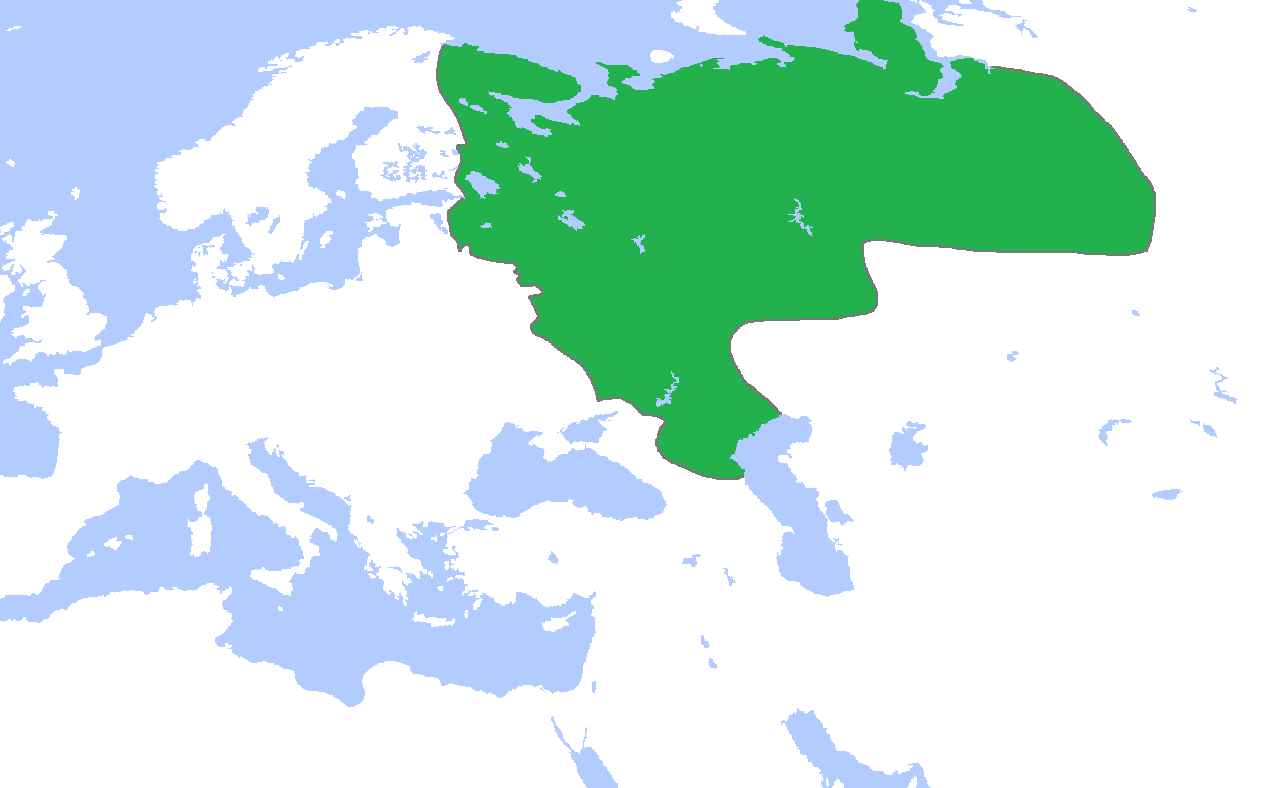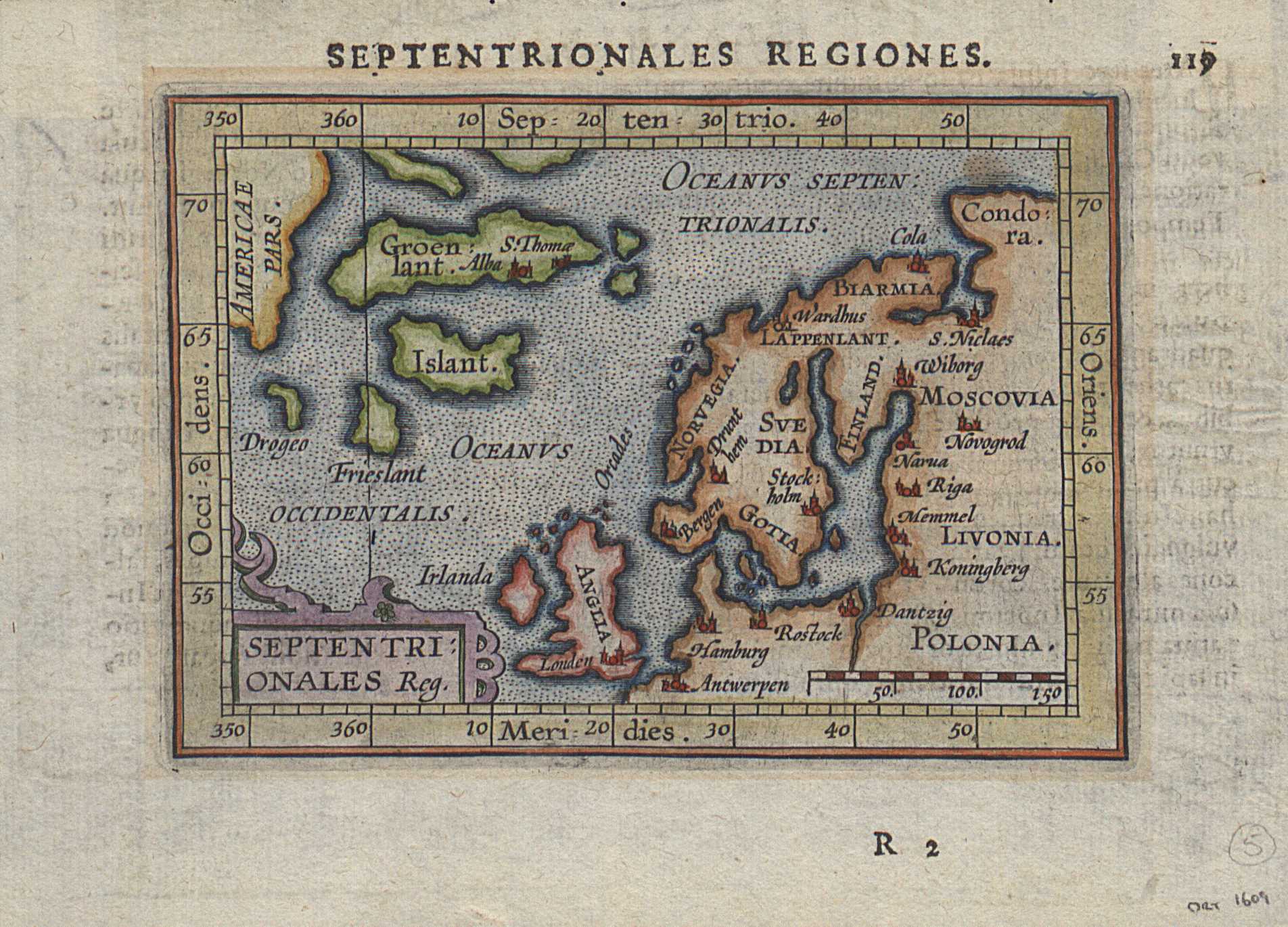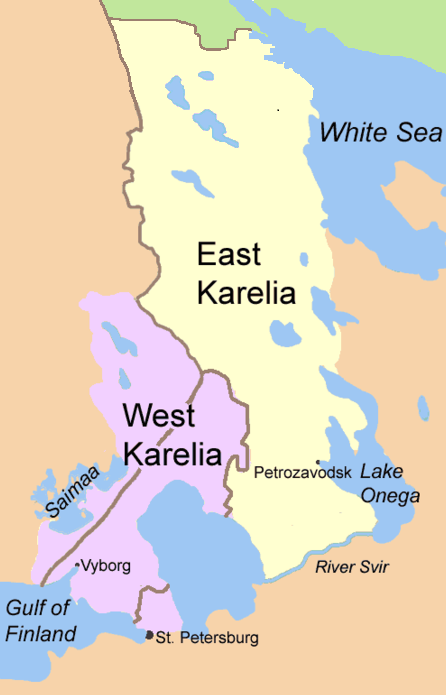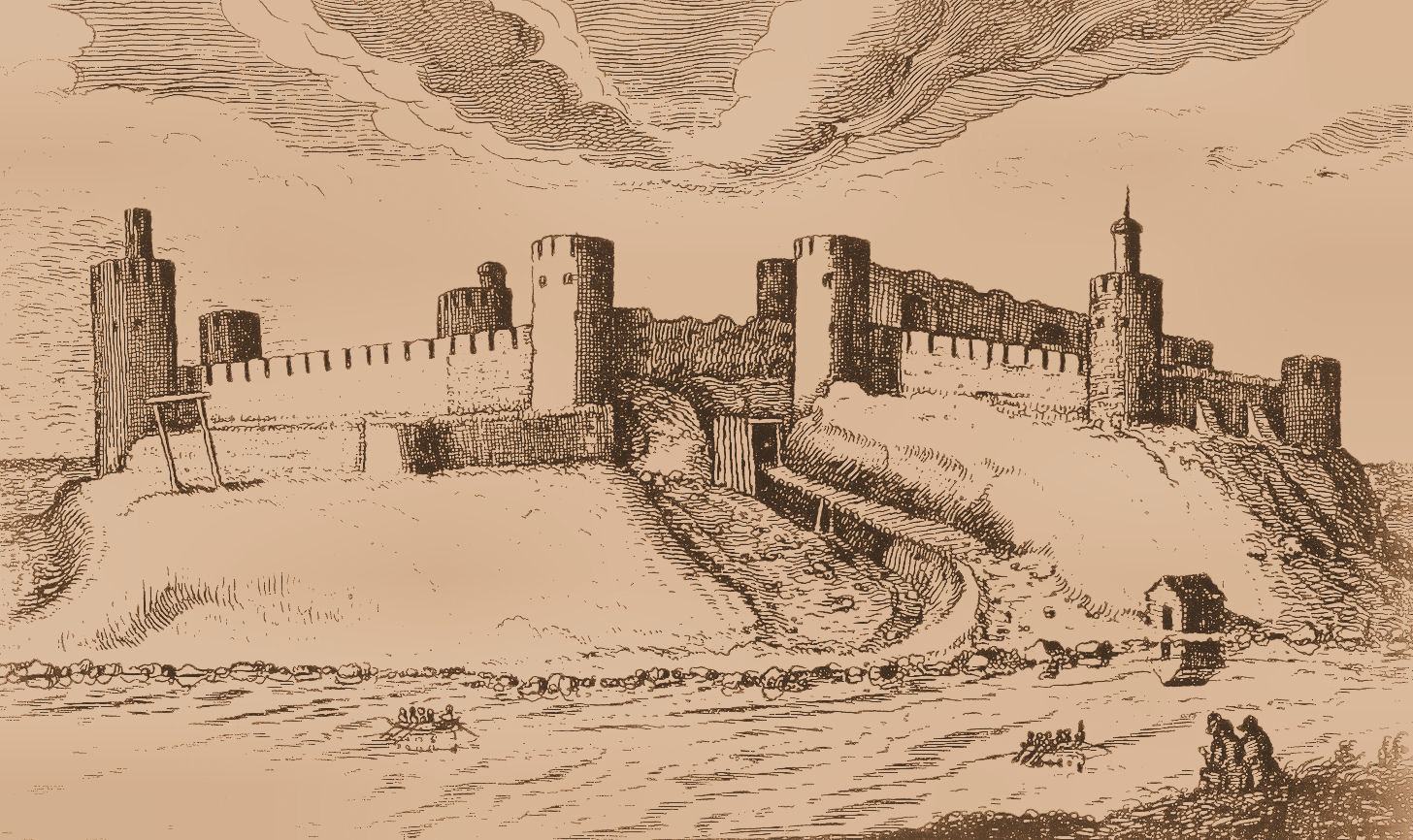|
Russo-Swedish War (1590–1595)
The Russo-Swedish War of 1590–1595 was instigated by Boris Godunov in the hope of gaining the territory of the Duchy of Estonia along the Gulf of Finland belonging to Sweden since the previous Livonian War. As soon as the Truce of Plussa expired early in 1590, a large Russian army led by Godunov and his sickly brother-in-law, Fyodor I of Russia, marched from Moscow towards Novgorod. On 18 January they crossed the Narva River and laid siege to the Swedish castle of Narva, commanded by Arvid Stålarm. Another important fortress, Jama (Jamburg), fell to Russian forces within two weeks. Simultaneously, the Russians ravaged Estonia as far as Reval (Tallinn) and Finland as far as Helsingfors (Helsinki). On 25 February, the local Swedish governor, Carl Henriksson Horn af Kanckas, was compelled to sign an armistice, which obliged Sweden to surrender the territories won by the Treaty of Plussa — namely Jama, Koporye, and Ivangorod. This peace settlement displeased John III of Swe ... [...More Info...] [...Related Items...] OR: [Wikipedia] [Google] [Baidu] |
Boris Godunov
Borís Fyodorovich Godunóv (; russian: Борис Фёдорович Годунов; 1552 ) ruled the Tsardom of Russia as ''de facto'' regent from c. 1585 to 1598 and then as the first non-Rurikid tsar from 1598 to 1605. After the end of his reign, Russia descended into the Time of Troubles. Early years Boris Godunov was the most noted member of an ancient, now extinct, Russian family of Tatar origin ( Chet), which came from the Horde to Kostroma in the early 14th century. This cites: * Platon Vasilievich Pavlov, ''On the Historical Significance of the Reign of Boris Godunov'' (Rus.) (Moscow, 1850) * Sergyei Mikhailivich Solovev, ''History of Russia'' (Rus.) (2nd ed., vols. vii–viii., St Petersburg, 1897). This legend is written in the annals dating from early 17th century. He was descended from the Tatar Prince Chet, who went from the Golden Horde to Russia and founded the Ipatiev Monastery in Kostroma. Boris was probably born before or after the Kazan campaign. Bor ... [...More Info...] [...Related Items...] OR: [Wikipedia] [Google] [Baidu] |
Helsingfors
Helsinki ( or ; ; sv, Helsingfors, ) is the capital, primate, and most populous city of Finland. Located on the shore of the Gulf of Finland, it is the seat of the region of Uusimaa in southern Finland, and has a population of . The city's urban area has a population of , making it by far the most populous urban area in Finland as well as the country's most important center for politics, education, finance, culture, and research; while Tampere in the Pirkanmaa region, located to the north from Helsinki, is the second largest urban area in Finland. Helsinki is located north of Tallinn, Estonia, east of Stockholm, Sweden, and west of Saint Petersburg, Russia. It has close historical ties with these three cities. Together with the cities of Espoo, Vantaa, and Kauniainen (and surrounding commuter towns, including the eastern neighboring municipality of Sipoo), Helsinki forms the Greater Helsinki metropolitan area, which has a population of over 1.5 million. Often con ... [...More Info...] [...Related Items...] OR: [Wikipedia] [Google] [Baidu] |
Pechenga Monastery
The Pechenga Monastery (russian: Печенгский монастырь; fi, Petsamon luostari) was for many centuries the northernmost monastery in the world. It was founded in 1533 at the influx of the Pechenga River into the Barents Sea, 135 km west of modern Murmansk, by St. Tryphon, a monk from Novgorod. Inspired by the model of the Solovki, Tryphon wished to convert the local Skolts to Christianity and to demonstrate how faith could flourish in the most inhospitable lands. His example was eagerly followed by other Russian monks. By 1572, the Pechenga Monastery counted about 50 brethren and 200 lay followers. Six years after St. Tryphon's death in 1583, the wooden monastery was raided and burnt down by the Swedes on December 25, 1589. It is said that the raid claimed the lives of 51 monks and 65 lay brothers, bringing the history of Tryphon's establishment to an end. This revenge raid, and was part of the Russo-Swedish War of 1590–1595, is said to have been carried ... [...More Info...] [...Related Items...] OR: [Wikipedia] [Google] [Baidu] |
Pekka Vesainen
Pekka Vesainen or (as a character in a historical novel by Santeri Ivalo) ''Juho Vesainen'' was a famous 16th century Finnish peasant leader and guerrilla chief during the "long wrath" or "pitkä viha". The long restlessness of Russo-Swedish war was worst among settlements in Northern Ostrobothnia region, which was officially then beyond the Russian border of the Treaty of Nöteborg. The long and cruel guerrilla war without any outside help created eventually need of warlords to take care of the protection of the settlers. The most famous figure of this period is Pekka Vesainen. A raiding party of peasants from Ii, led by Vesainen, destroyed and burned Kandalaksha (Kantalahti) and a small Russian settlement in Kem in summer 1589. They took a considerable loot with them back to Ii. According to oral tradition and historical speculation from later centuries, Vesainen would have also led another raid later on same year, on which the peasants destroyed the Pechenga Monastery The ... [...More Info...] [...Related Items...] OR: [Wikipedia] [Google] [Baidu] |
White Sea
The White Sea (russian: Белое море, ''Béloye móre''; Karelian and fi, Vienanmeri, lit. Dvina Sea; yrk, Сэрако ямʼ, ''Serako yam'') is a southern inlet of the Barents Sea located on the northwest coast of Russia. It is surrounded by Karelia to the west, the Kola Peninsula to the north, and the Kanin Peninsula to the northeast. The whole of the White Sea is under Russian sovereignty and considered to be part of the internal waters of Russia.A. D. Dobrovolskyi and B. S. Zalogi"Seas of USSR. White Sea" Moscow University (1982) (in Russian) Administratively, it is divided between Arkhangelsk and Murmansk oblasts and the Republic of Karelia. The major port of Arkhangelsk is located on the White Sea. For much of Russia's history this was Russia's main centre of international maritime trade, conducted by the Pomors ("seaside settlers") from Kholmogory. In the modern era it became an important Soviet naval and submarine base. The White Sea–Baltic Can ... [...More Info...] [...Related Items...] OR: [Wikipedia] [Google] [Baidu] |
Kola (town)
Kola (russian: Ко́ла; se, Guoládat; sms, Kuâlõk) is a town and the administrative center of Kolsky District of Murmansk Oblast, Russia, located at the confluence of the Kola and Tuloma Rivers, south of Murmansk and southwest of Severomorsk. It is the oldest town of the Kola Peninsula. Population: 11,060 ( 2002 Census); History The district of Kolo was first attested in Russian chronicles in 1264. The first documented mention of the town itself dates to 1565—''Administrative-Territorial Division of Murmansk Oblast'', pp. 18–19 the area was settled by the Pomors, who built the fort of Kola also called ''Malmus'' (russian: Мальмус). Over time, Sweden extracted the Kola Peninsula from both Russia and Denmark-Norway in a series of wars and resulting treaties.''A Short History of Finland'', pp. 36–37 However, in the later Treaty of Teusina in 1595, Sweden acknowledged Russian rights in Kola. Claims from Denmark-Norway remained, however, and in ... [...More Info...] [...Related Items...] OR: [Wikipedia] [Google] [Baidu] |
Eastern Karelia
East Karelia ( fi, Itä-Karjala, Karelian: ''Idä-Karjala''), also rendered as Eastern Karelia or Russian Karelia, is a name for the part of Karelia that since the Treaty of Stolbova in 1617 has remained Eastern Orthodox under Russian supremacy. It is separate from the western part of Karelia, called ''Finnish Karelia'' or historically ''Swedish Karelia'' (before 1808). Most of East Karelia has become part of the Republic of Karelia within the Russian Federation. It consists mainly of the old historical regions of Viena and Aunus. Culture and ideology 19th-century ethnic-nationalist Fennomans saw East Karelia as the ancient home of Finnic culture, "un-contaminated" by either Scandinavians or Slavs. In the sparsely-populated East Karelian backwoods, mainly in White Karelia, Elias Lönnrot (1802–1884) collected the folk tales that ultimately would become Finland's national epic, the Kalevala (published from 1835 to 1849). The idea of annexing East Karelia to Finland a ... [...More Info...] [...Related Items...] OR: [Wikipedia] [Google] [Baidu] |
Dolgorukov
The House of Dolgorukov () is a princely Russian family of Rurikid stock. They are a cadet branch of the Obolenskiy family (until 1494 the rulers of Obolensk, one of the Upper Oka Principalities) and as such claiming patrilineal descent from Mikhail of Chernigov (d. 1246). The founder of the Dolgorukov branch of the Obolenskiy is Prince Ivan Andreevich Oblenskiy (15th century), who for his vengefulness was given the nickname of Долгорукий ''Dolgorukiy'', i.e. "far-reaching". Obolensk was incorporated into the expanding Grand Duchy of Moscow in 1494, and the house of Dolgorukov became a powerful noble family in Tsardom of Russia and the Russian Empire. List of members Members of the House of Dolgorukov include: * Maria Dolgorukaya (d. 1580), a wife of Ivan IV *Grigorij Ivanovich Menshoi Tchyort ("the Devil") Dolgorukov (Князь Григорий Иванович Меньшой Чёрт Долгоруков), died after 1598, governor under Ivan the Terrible. *Al ... [...More Info...] [...Related Items...] OR: [Wikipedia] [Google] [Baidu] |
Gdov
Gdov (russian: Гдов) is a town and the administrative center of Gdovsky District in Pskov Oblast, Russia, located on the river Gdovka, just from its outflow into Lake Peipus. Population: History It was first mentioned in the beginning of the 14th century, as an outpost guarding the city of Pskov. Between 1431 and 1434, Pskovians built a fortress there, the remains of which can still be seen. It was attacked on numerous occasions by the Swedes and the Polish-Lithuanian Commonwealth (e.g., during the Russo–Swedish War (1590–1595) and the Ingrian War), and captured by the Swedes in 1614, but was finally returned to Russia in 1617 according to the Treaty of Stolbovo. In the course of the administrative reform carried out in 1708 by Peter the Great, Gdov was made a part of Ingermanland Governorate (known since 1710 as Saint Petersburg Governorate). [...More Info...] [...Related Items...] OR: [Wikipedia] [Google] [Baidu] |
John III Of Sweden
John III ( sv , Johan III, fi, Juhana III; 20 December 1537 – 17 November 1592) was King of Sweden from 1569 until his death. He was the son of King Gustav I of Sweden and his second wife Margaret Leijonhufvud. He was also, quite autonomously, the ruler of Finland, as ''Duke John'' from 1556 to 1563. In 1581 he assumed also the title Grand Prince of Finland. He attained the Swedish throne after a rebellion against his half-brother Eric XIV. He is mainly remembered for his attempts to close the gap between the newly established Lutheran Church of Sweden and the Catholic church, as well as his conflict with, and murder of, his brother. His first wife was Catherine Jagellonica of the Polish-Lithuanian ruling family, and their son Sigismund eventually ascended both the Polish-Lithuanian and Swedish thrones. Biography John was the second son of Gustav Vasa (1523–60). His mother was Margaret Leijonhufvud (1514–51), a Swedish noblewoman. Gustav had placed his son in F ... [...More Info...] [...Related Items...] OR: [Wikipedia] [Google] [Baidu] |
Ivangorod
Ivangorod ( rus, Иванго́род, p=ɪvɐnˈɡorət; et, Jaanilinn; vot, Jaanilidna) is a town in Kingiseppsky District of Leningrad Oblast, Russia, located on the east bank of the Narva river which flows along the Estonia–Russia international border, west of St. Petersburg. The town's population was recorded as Ivangorod is a major border crossing point and a railway station by the Tallinn– St. Petersburg line. It is located just opposite to the Estonian town of Narva. The town is the site of the Ivangorod Fortress, a prominent fortification monument of the 15th and the 16th centuries. History The fortress, established in 1492 during the reign of Ivan III of Moscow, took its name (literally: Ivan-town — ''gorod'' in Russian means "town" or "city") from that of the Tsar. Between 1581 and 1590 and from 1612 to 1704, Sweden controlled the area. Ivangorod was granted town privileges and administered as a Russian township under the Swedish Em ... [...More Info...] [...Related Items...] OR: [Wikipedia] [Google] [Baidu] |
Koporye
Koporye (russian: Копорье; Finnish: ''Kaprio''; sv, Koporje) is a historic village ('' selo'') in Leningrad Oblast, Russia, located about west of St. Petersburg and south of the Koporye Bay of the Baltic Sea. Its population in 2017 was 1603. History The first wooden fortress on the coast of the Koporye Bay was built by the Teutonic Knights in the winter of 1240, only to be destroyed by Alexander Nevsky the next year. The second fortress was built in stone by Alexander's son Dmitry Alexandrovich in 1280. Enraged by the prince's independence, the Novgorodians razed the fortress two years later. The Swedes took advantage of the lack of a fortress and occupied the banks of the Narova river. The Novgorodians had to restore the stone fort in 1297. Koporye was the strongest stronghold in the region and survived numerous attacks during the Swedish-Novgorodian Wars. In 14-15th centuries the town was given several times to mercenary princes invited by Novgorodians to p ... [...More Info...] [...Related Items...] OR: [Wikipedia] [Google] [Baidu] |







